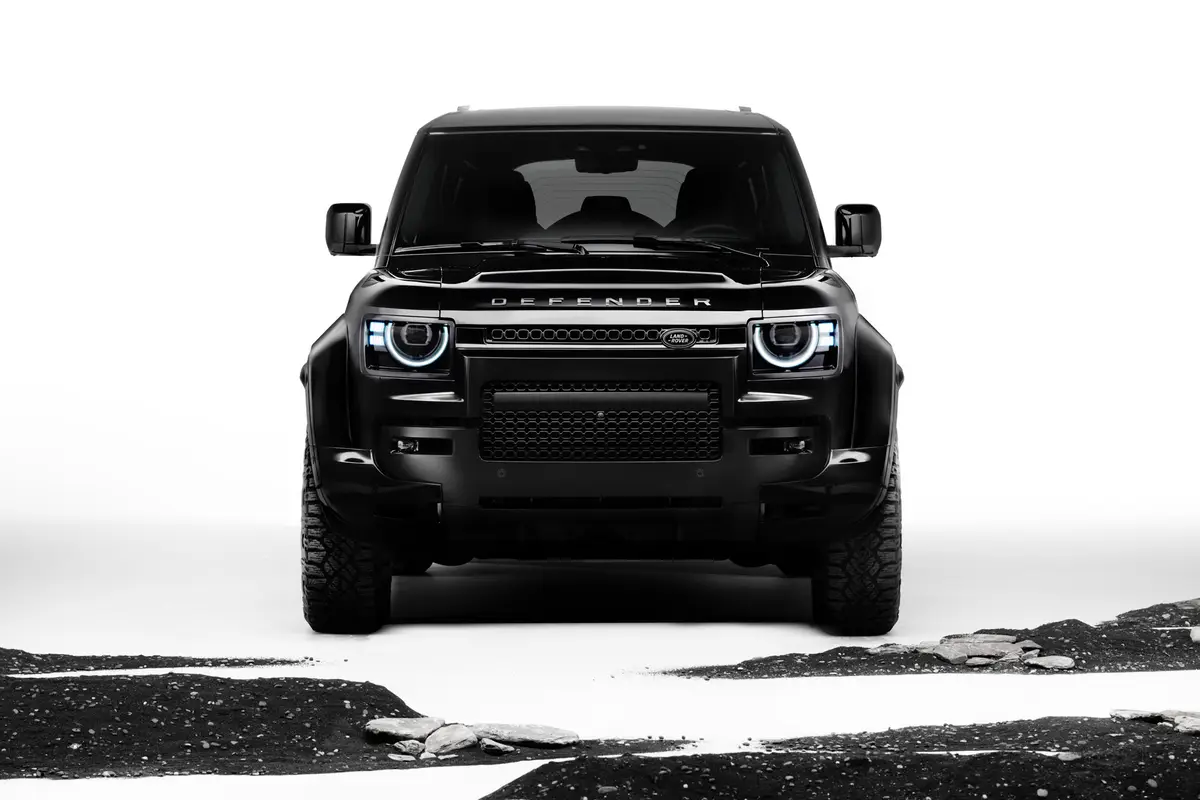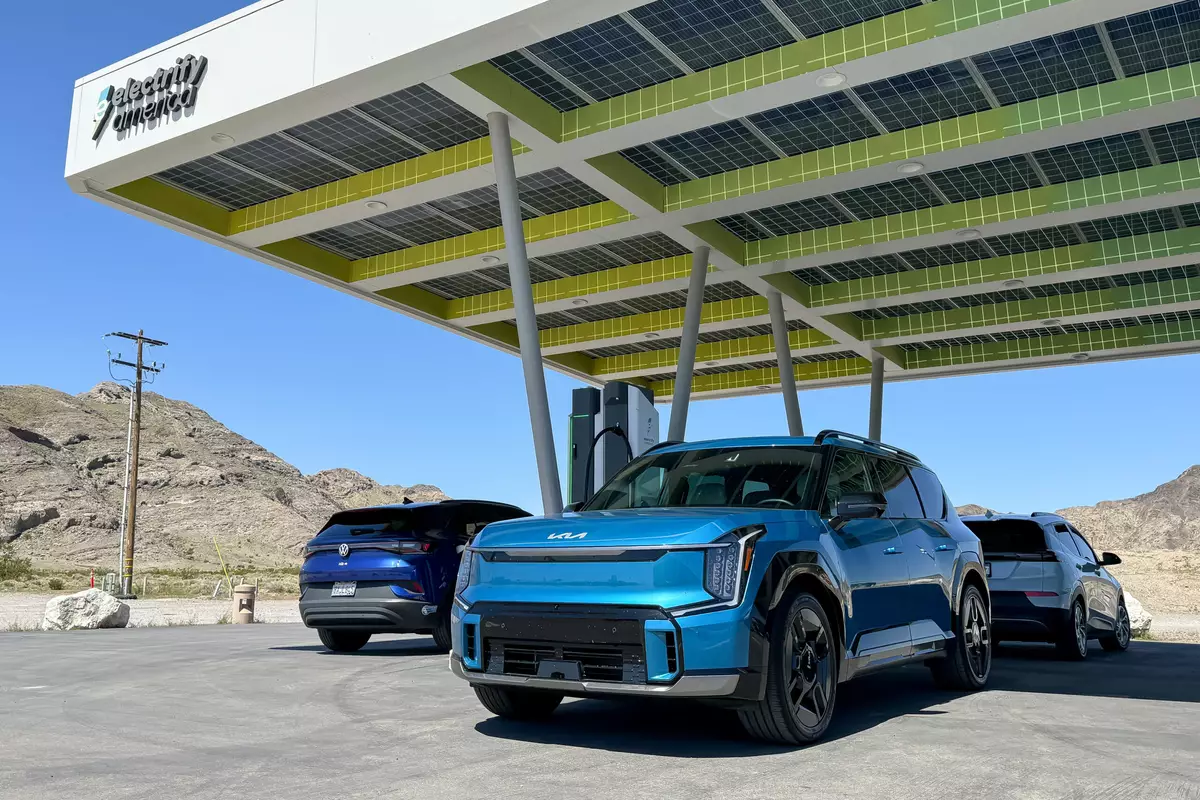chicagotribune.com's view
`Gentlemen, start your engines– and will the Australian in the Corvetteparked in front of the pole car please call Earl Scheib as soon as you can.”
That might be the message coming across the loudspeaker May 24 at the 82ndrunning of the Indianapolis 500.
The 33 vehicles vying for racing fame will be paced by a 1998 ChevroletCorvette with noted Australian golfer Greg “The Shark” Norman behind thewheel.
Norman will be behind the wheel at least for those first few parade andpace laps around the 2 1/2-mile oval. Once the flag is dropped and the racebegins, Norman, like most of the former celebrity pace-car drivers, will bereplaced by Don Bailey (a friend of the Hulman-George family that owns thetrack), one of the true gentlemen in racing and a man who probably will bewearing a helmet with tinted shield so no one recognizes him behind the wheelof a pace car decorated to look like an Easter egg.
The ‘Vette pace car chosen for this year’s race started life as a ’98convertible. To the fiberglass body was added a few coats of purple paint.Chevy calls the finish Radar Blue, but even though we have a touch of colorblindness, the paint is similar to the passionate purple on the PlymouthProwler.
Chevy general manager John Middlebrook said the intent was to come up witha pace car that would “grab people immediately and turn heads.” Turn? It’llswivel.
So as not to lead spectators to believe a four-wheel plum is pacing therace, Chevy added brilliant yellow wheels, yellow bucket seats, yellowstitching on the steering column and multicolored pastel decals that run stemto stern and include enough verbiage to inform one and all of the time, date,location of the race and the fact that this is a Chevrolet Corvette.
The car lacks but one decal, stating: “Post no bills.” No room for it.
The ’98 Corvette is the 11th Chevy pace car, the fourth Corvette andChevy’s best effort in coming up with a sports car and a convertible.
The annual running of the race may have lost some of its lure–in largepart because it’s lost some of its top-name drivers–but the purple-and-yellowpace car should keep onlookers awake.
The attraction of the pace car– decals, yellow wheels and seats aside–isthe potent 5.7-liter, 345- horsepower V-8, which makes the open-top two-seatera little rocket, and the active handling suspension system being introduced onthe pace car and soon to be offered through the Corvette line.
Active handling is standard on all pace-car convertibles and is just nowbeing offered as a $500 option on the regular ’98 Corvette coupe andconvertible.
The Corvette active-handling system is similar to that at Chevy’s sisterdivision Cadillac, where it’s called StabiliTrak. Active-handling sensors workwith the car’s anti-lock brakes and traction control. Those sensors “read”steering input, vehicle yaw rate and lateral “g” forces and selectivelyactivate the brake at any of the four wheels when needed to stabilize thecar.
Active handling reduces excessive understeer or oversteer. Understeer isthe tendency to “push” or run wide in a corner, while oversteer is thetendency for the back end of the car to swing out in a corner. By selectivelyapplying the brakes, the system pulls the car into line.
For several days of testing the pace car, we found the road surfaces rainsoaked and treacherous, based on the number of spin outs and accidentsblocking our passage. The ‘Vette’s active handling performed as advertised. Itmade wet roads seem bone dry. The tollway ramps were taken, at speed, withoutthe car quivering.
Contributing to the superb handling are speed-rated, stick-to-the-pavementradial tires–17-inch upfront, 18-inch in the rear.
A convertible pace car means top-down motoring spring through fall, andactive handling means you don’t have to put the car away late fall throughearly spring when Ma Nature or Al Neenyo take over.
Of course, you’d have to have a hollow melon to take a ‘Vette pace carreplica out on snow or ice-covered pavement and risk having some nitwit runinto your irreplaceable decals or mess up those yellow wheels or seats. Skilled drivers who take part in autocross or gymkhana can turn tractioncontrol off to allow some wheel spin and oversteer.
Convertible enthusiasts will be pleasantly surprised by this drop top. Thecar was designed as coupe and convertible. The convertible is solid. Nosqueaks, no rattles, no body flexing from inadequate chassis support, nosoft-top whistling or flapping.
In fact, the cabin is so calm and noise- and vibration-free you’ll probablyforget you’re in a convertible and think you’re in a hardtop coupe–until youspot the sun and release the top and store it away for a breath of fresh air.
Of course, when you realize that those around you now have an unobstructedview of the yellow seats in the purple car, you may want to enjoy the quietcabin with top up until after dark–or run out and buy the regular ‘Vetteconvertible, add active handling and on May 24 let Greg Norman get all theattention.
Chevrolet will build only 1,158 ’98 Corvette Indy 500 pace car convertiblesfor public consumption, 53 of them earmarked for export to the Mideast,Europe, the Caribbean and Canada.
Base price for the Corvette convertible is $44,425. Add $5,039 for the Indy500 pace-car decals and pastel decor when ordering with 4-speed automatic and$5,754 when ordering with 6-speed manual.
Standard equipment includes AM-FM stereo with cassette player,speed-compensated volume control and digital clock; remote keyless entry; dualzone heating/air conditioning; dual power leather adjustable sport bucketseats with memory (why memory in a car that probably will have no more thanone driver until sold?); power windows/locks; and rear-window defroster.
The first time the Corvette paced Indy was in 1978, the ‘Vette’s 25thanniversary. It also appeared in 1986 and 1995.
The first Indy 500 was run in 1911, same year Chevrolet was formed inDetroit. It wasn’t until 1948 that a Chevrolet, the Fleetmaster convertible,became a pace car, powered by a Blue-flame 6-cylinder engine with 3-speedmanual. In 1955, the Bel Air convertible paced the race.
In 1967, the first year for the Camaro, a SS 396 convertible was pace car,and for the first time Chevy sold pace-car replicas– white with a blue stripearound the nose. Only 100 were built.
In 1969 the Camaro convertible again paced the race, and 3,675 replicaswere sold; 6,502 replicas of the ’78 Corvette coupe pace car were sold; in1982, 6,360 replicas of the Camaro Z-28 coupe pace car were sold. In 1986,Chevy offered a pace-car decal package to anyone buying a coupe orconvertible, which was the pace car. In 1990 a Beretta convertible became theonly Chevy concept to take on the pace task, and though no Berettaconvertibles were produced, Chevy sold 4,500 special-edition coupes, 1,500 inpace-car yellow.
In 1993 a Camaro Z-28 coupe paced the race and only 645 replicas werebuilt; and only 527 replicas of the 1995 Corvette convertible pace car wereproduced.
The pace car typically is more of a put-in-storage-collectible than aneveryday runabout. Once you come in contact with the color scheme, you’llunderstand why this one should be hidden.
By the way, for those who plan to attend the race, or at least will be nearthe track that day, keep an eye out for some strange-looking ‘Vettes circlingtown. Chevy is holding its 1999 Corvette media preview the weekend of the raceand word is that the upcoming fixed-top Corvette coupe, coming this fall as alower-priced version of the removable-hardtop coupe and convertible, will bepart of the festivities.
>>1998 Chevrolet Corvette Indy Pace Car
© 1998 Chicago Tribune Wheelbase: 104.5 inches Length: 179.7 inches Engine: 5.7-liter, 345-h.p. V-8 Transmission: 4-speed automatic Fuel economy: 17 m.p.g. city/25 m.p.g. highway Base price: $44,425 Price as tested: $49,464. Includes $5,039 for Pace Car package with4-speed automatic, purple exterior body trim, yellow wheels, black-leatherseats with yellow accents and yellow stitching on the steering wheel, exteriorpace car decals, interior pace car floor mats. Add $565 for freight. Pluses: With those colors and all those decals, you will never misplaceyour car. Potent V-8, but even more important, an active suspension systemprovides harmony with any road under most any condition. A ’98 Vetteconvertible under the color coating and decal adhesives, which means smooth,comfortable short-distance sprinter or long-distance hauler without squeaks orrattles or bouncing you around like a Ping-Pong ball. Only 1,158–53 forexport–to be sold. Minuses: Pastel poisoning. Exterior makes car look like an Easter egg.Vision out rear window less than ideal–and V-8 so potent, most folks you seewill be in the rear window.>>
Latest news



